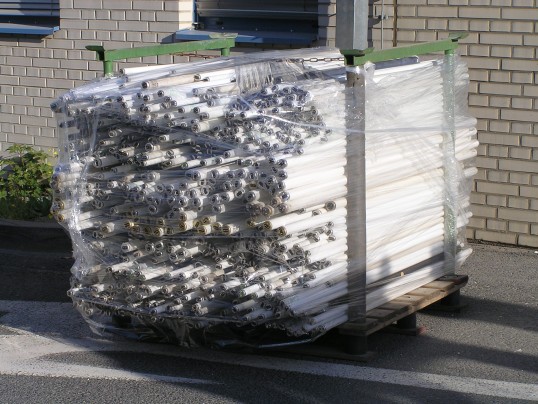Mercury exposure caused by lamps and liquid crystal display (LCD) devices
Compact fluorescent lamps and fluorescent tubes (including cold-cathode fluorescent tubes used for backlighting LCD TV and monitor screens) contain small quantities of mercury. Light is generated by gas discharge and the excitation of mercury vapour, which causes a plasma to be formed.
No mercury is released into the environment when fluorescent lamps are used as intended. Damaged (i.e. broken) fluorescent lamps may however release mercury vapour. Lamps containing mercury must not therefore be disposed of with other domestic refuse. Instead, they should be disposed of, as far as possible intact, at suitable collection points (recycling, retail or waste disposal businesses). Exposure to mercury must be anticipated at collection points, particularly in indoor areas, and during the recycling of end-of-life lamps and products containing LCDs.
The collection and recycling situation in Germany has been studied systematically by the German Social Accident Insurance, led by the German Social Accident Insurance Institution for the public sector in Hesse (UKH). Also involved in the study were the Institute for Occupational Safety and Health of the German Social Accident Insurance (IFA), the Federal Institute for Occupational Safety and Health (BAuA), the State Institute for Environmental Protection of Baden-Württemberg (LUBW), the association of German municipal companies (VKU), and representatives of manufacturing and recycling businesses. The project was completed in 2016.
The project partners measured the mercury exposure at a number of workplaces. They determined the exposure to mercury during manufacture, collection, removal of cold-cathode fluorescent tubes from LCD TVs/monitors, and recycling of end-of-life gas-discharge lamps. In a test chamber, the project partners simulated a range of tasks involving contact with lamps, and examined protective measures for the reduction of mercury exposure.
Project results
The results of the project are available in the form of descriptions of exposure:
- Exposure to mercury during the manufacture of lamps (PDF, 202 kB, non-accessible)
- Exposure to mercury during the recycling of lamps (PDF, 212 kB, non-accessible)
As a result of the project, Recommendations for risk assessment (EGUs) issued by the German Social Accident Insurance Institutions (in German only):
- Quecksilberexpositionen bei der Sammlung von Leuchtmitteln (DGUV Information 213-732) (Exposure to mercury arising during the collection of lamps containing the substance)
- Quecksilberexpositionen bei der Demontage von Flachbildschirmen (DGUV Information 213-733) (Exposure to mercury arising during the dismantling of flat-screen TVs/monitors)
Both of them are listed as "Process- and substance-specific criteria (VSK) for identifying and assessing inhalation exposure" in the Annex of the German Technical Rule for Hazardous Substances 420" (Technische Regel für Gefahrstoffe (TRGS) 420).
Descriptions of exposure

